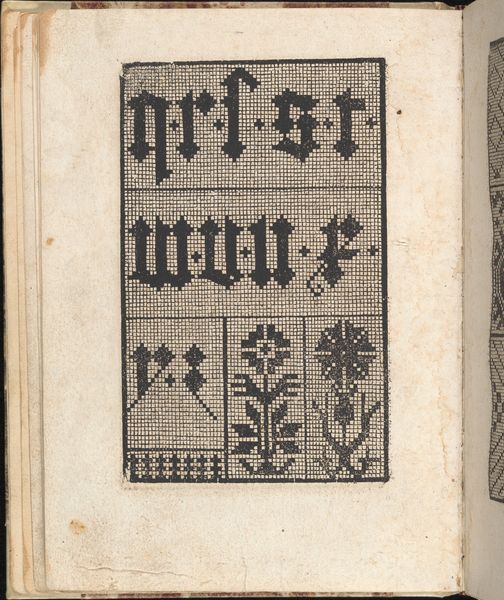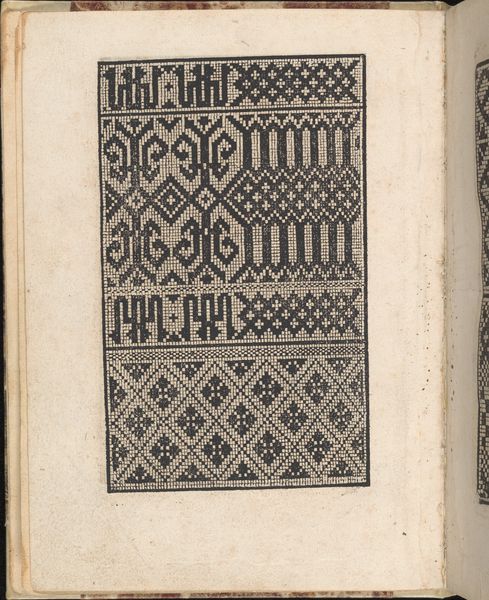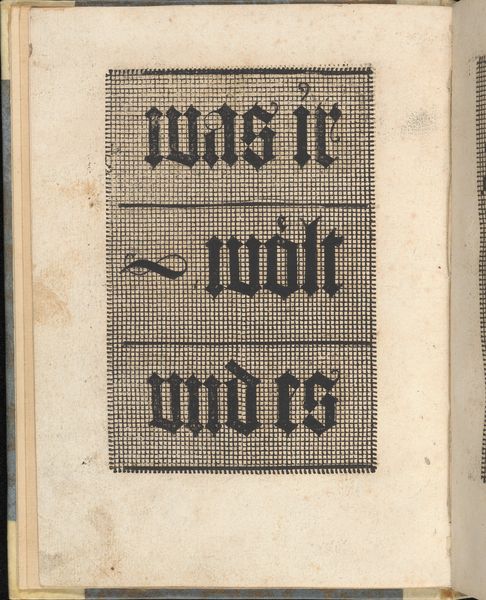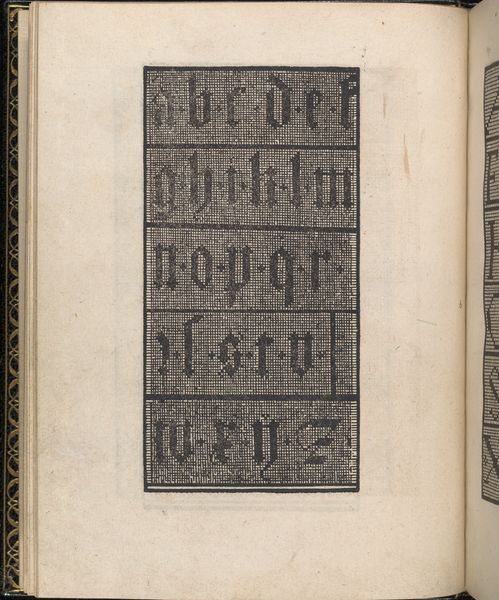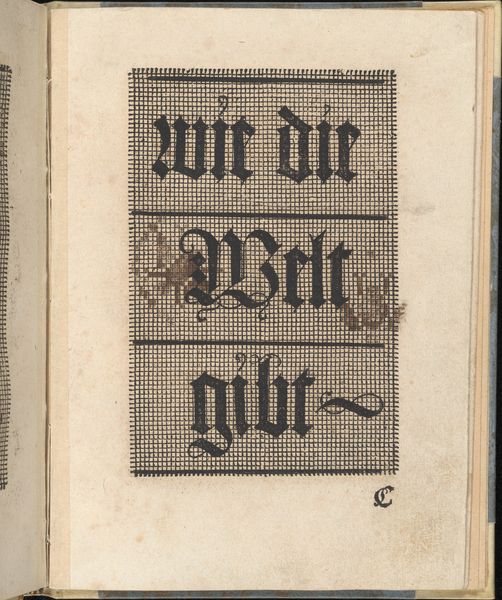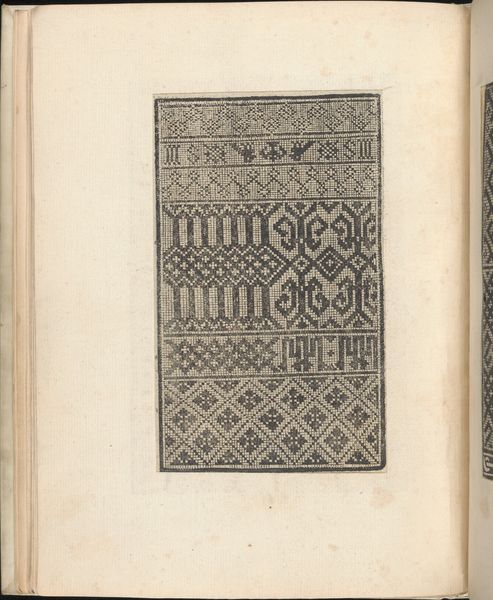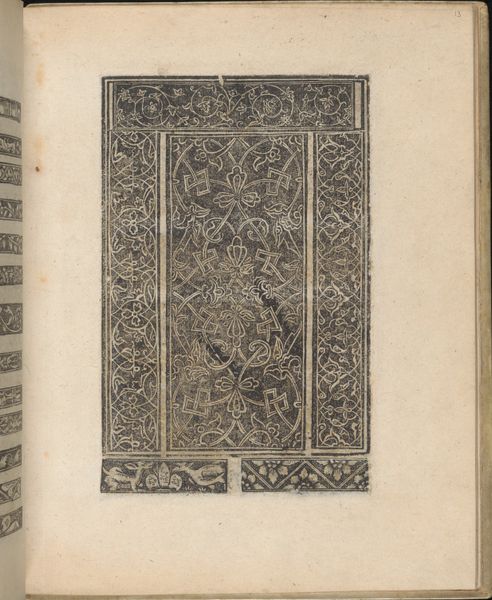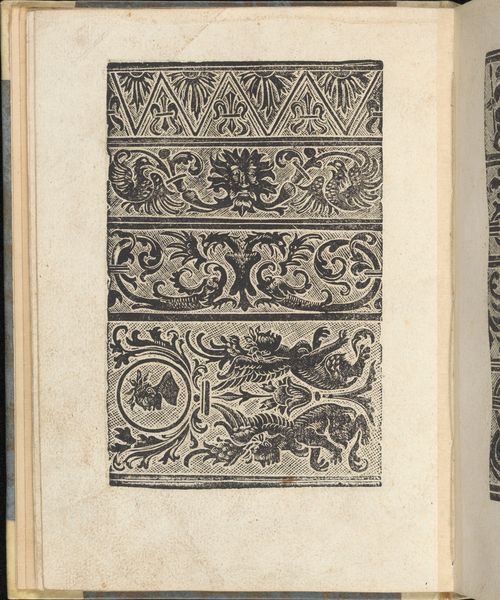
Ein new getruckt model Büchli...Page 15, recto 1529
0:00
0:00
drawing, print
#
drawing
#
aged paper
#
toned paper
#
water colours
#
ink paper printed
# print
#
book
#
personal sketchbook
#
coloured pencil
#
watercolour bleed
#
sketchbook art
#
marker colouring
#
watercolor
Dimensions: Overall: 7 7/8 x 6 1/8 in. (20 x 15.5 cm)
Copyright: Public Domain
This page comes from a model book printed in Germany in the 16th century by Johann Schönsperger the Younger, probably using woodcut on paper. The letters are shown in a grid, as if they’re made of individual stitches. The shapes are bold, Gothic, and blocky. The density of ink rewards close inspection. You can imagine a needleworker carefully counting squares, translating the design into textile. Printed model books like this played a crucial role in standardizing design and disseminating patterns across Europe, particularly in the burgeoning textile industry. It speaks to the rising literacy rates and the increasing availability of printed materials. The book flattened and standardized cultural practices, turning needlework into a commercial activity, and providing patterns for a growing market. Consider the book's design, which has an aesthetic value and a functional one. By understanding its purpose, we can appreciate how craft traditions intertwine with broader economic and social developments.
Comments
No comments
Be the first to comment and join the conversation on the ultimate creative platform.
